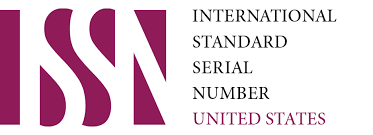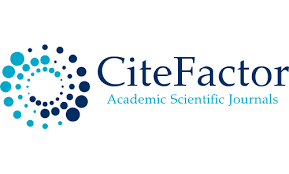Blended Learning
Keywords:
Blended learning, Learning Management System, online and offline mode of learningAbstract
Despite the fact that its effectiveness promotes more learners to be engaged, developing world faces challenges to make it more innovative in the process of teaching. It leads to some questions about whether or not this new approach is effective, what are the results in terms of learning outcomes, what difficulties can emerge and how they can be overcome. This paper examines these questions and discusses possible answers: increased student engagement and achievement, improved satisfaction and effectiveness are two different positive outcomes of blended learning approach for students whereas technological and learning environment challenges can be dealt with two varied ways: utilization of Learning Management System (LMS) and teachers’ competence to apply different techniques during the sessions.
References
Angelino, L, Williams, F., & Natvig, D. (2007). Strategies to engage online students and reduce
attrition rates. The Journal of Educators Online, 4 (2), 1-14.
Blocker, J. M., & Tucker, G. (2001). Using constructivist principles in designing and integrating
online collaborative interactions.
Clark, R., Kaw, A., Lou, Y., Scott, A., & Besterfield-Sacre, M. (2018). Evaluating blended and
flipped instruction in numerical methods at multiple engineering schools. International Journal for
the Scholarship of Teaching & Learning, 12(1), 1-16.
Dias, S. B., & Diniz, J. A. (2014). Towards an Enhanced Learning Management System for Blended
Learning in Higher Education Incorporating Distinct Learners’ Profiles.
Dr. Enid Acosta-Tello (2015). Enhancing the online class: Effective use of synchronous interactive
online instruction
Dr. Digambar M. Ghodke (2021). LMS as an Effective Way for Overcoming the Barriers in Online
Teaching-Learning and Evaluation Process: During Covid-19 and Beyond.
Garrison, D. R., & Vaughan, N. D. (2008). Blended learning in higher education: Framework,
principles, and guidelines. Jossey-Bass.
Harris, J., & Park, C. (2016). A case study on blended learning in engineering education.
Proceedings of the Canadian Engineering Education Association (CEEA) conference.
https://doi.org/10.24908/pceea.v0i0.648
Huang, X. & Hsiao, E. (2012). Synchronous and asynchronous communication in an online
Environment. The Quarterly Review of Distance Education, 13 (1), 15-30.
Jamieson, M. V., & Shaw, J. M. (2016). Online learning element design - Development and
application experiences. In proceedings of the canadian engineering education association (CEEA)
conference. https://doi.org/10.24908/pc`eea.v0i0.6498.
Marc T. Kiviniami (2014), Effects of a blended learning approach on student outcomes in a
graduate-level public health course.
Mugenyi, Justice Kintu, Chang Zhu and Edmond Kagambe (2017), Blended learning effectiveness:
the relationship between student characteristics, design features and outcomes.
Nurasma’ Shamsuddin, Jasber Kaur (2020), Students’ learning style and its effect on blended
learning, does it matter?
Phillip A. Olt (2018), Virtually there: Distant freshmen blended in classes through synchronous
online education.
Peter Augustine Lawler ( 2005), The problem of technology. Perspectives on political science,
volume 34, number 3.
Edward W. Younkins (2000), The freeman volume 50, Issue 1.
Ward, M., Peters, G. & Shelley, K. (2010). Student and faculty perceptions of the quality of online
learning experiences. International review of research in open and distance learning, 11 (3), 57-77.
Downloads
Published
Issue
Section
License

This work is licensed under a Creative Commons Attribution-NonCommercial 4.0 International License.
User Rights
Under the Creative Commons Attribution-NonCommercial 4.0 International (CC-BY-NC), the author (s) and users are free to share (copy, distribute and transmit the contribution).
Rights of Authors
Authors retain the following rights:
1. Copyright and other proprietary rights relating to the article, such as patent rights,
2. the right to use the substance of the article in future works, including lectures and books,
3. the right to reproduce the article for own purposes, provided the copies are not offered for sale,
4. the right to self-archive the article.












